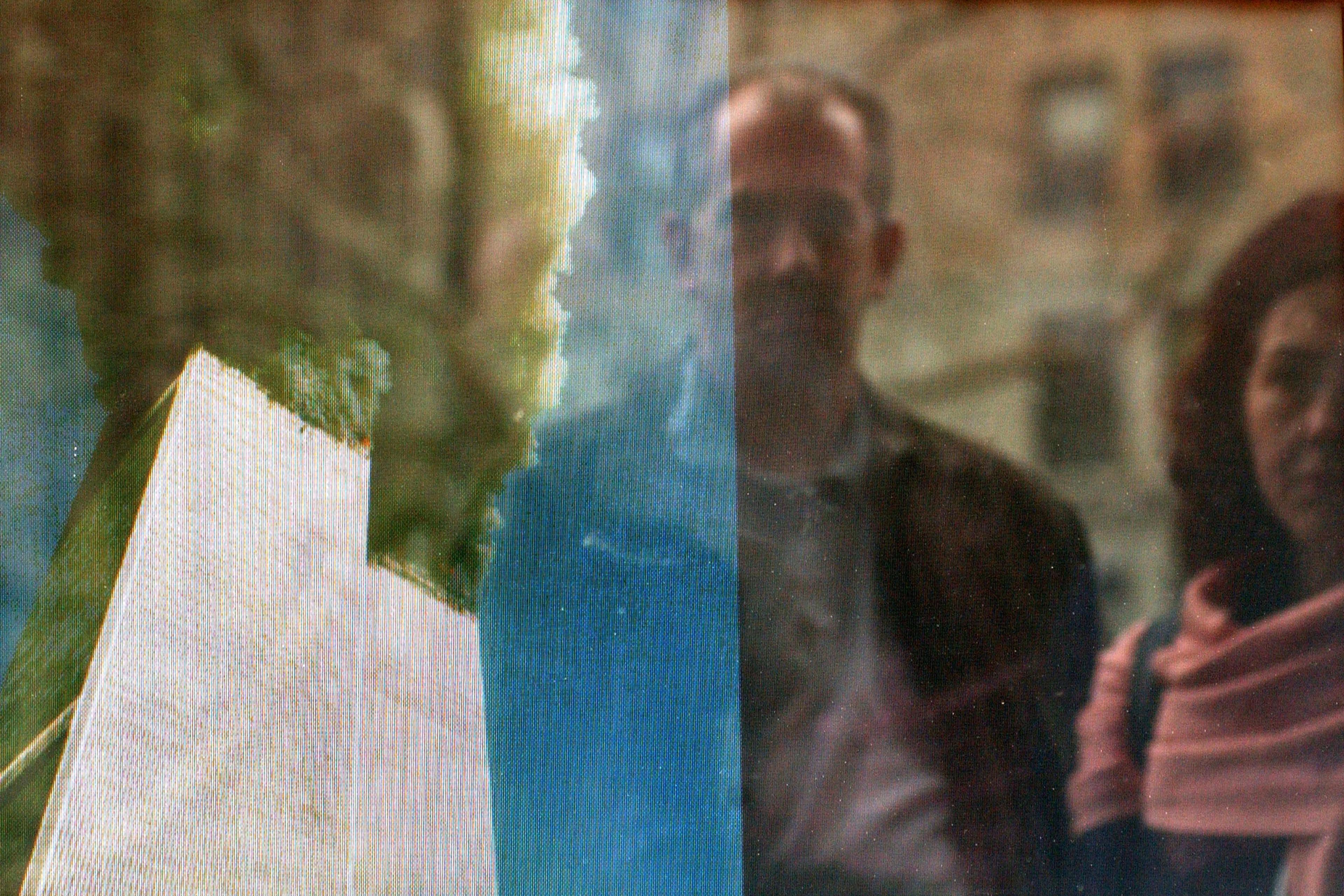How do you imagine ‘equanimity’ in yourself or others? Is it a sense of quiet calm, an evenness of temper or composure in the face of stressful situations? Maybe it marks someone who is unflappable, imperturbable? You might be said to have an equanimous spirit when you display steadfast inner stillness, a kind of serenity. In short, the motto ‘calm, cool and collected’ seems to do nicely as a summary of the received definition of equanimity.
In the teachings and practices of mindfulness, developing equanimity has acquired a reputation as a way of mastering strong or disruptive experiences through emotional downregulation and equilibrium. Here, the emphasis is on inner strength, solidity, with the image of sitting like a mountain typically serving as an ideal. Meanwhile, current approaches to equanimity as a psychological construct construe it as a matter of weaker evaluative responses to things that normally produce stronger ones.
For me, however, there was always something unsatisfying about the rather solemn view of equanimity as steadfastness ‘in the face’ of the world and its adversities (or the inner world and its turmoil). Is it, I wondered, merely a sort of unshakeable refuge? Is it mainly an emotional governor, preventing one from being unduly perturbed or flustered? Does it essentially consist in profound inner stillness?
After looking at equanimity from the broad perspective of intellectual history, none of this fully resonated. In fact, my look at both Western and Eastern ideas about equanimity revealed quite the opposite: it is the hallmark of a dynamic, flexible consciousness that depends upon ceaseless perspective-taking and playfulness. To get closer to equanimity’s essential meaning involves thinking of it less as a noun than as a verb.
Equanimity’s power – and it is powerful – depends on states not of stillness but of activity; not on achieved balance but on continual rebalancing; and finally, not on earnest steadfastness but on supremely flexible playfulness. If equanimity is little more than a strategy that ends in weaker evaluative responses to the world, then its difference from the usual elements of mindfulness – acceptance, letting go, nonjudging, nonattaching, and so on – is obscured. Against the grain of much contemporary writing on equanimity, it is clear to me that, say, suspending judgment is simply one possible dimension of the open-ended process of equanimity, not its primary condition.
Too often, equanimity is described as a practice or technique that aims at the production of something – usually a state of stillness. Other proposed aims include a ‘countercultural’ refashioning of the self: eg, ‘to disarm the way we define ourselves in terms of achievements, fame, praise, and what we’re told should make us happy’, as the meditation teacher Christina Feldman and the psychologist Willem Kuyken put it in Mindfulness (2019); or being compassionate and caring instead of discriminatory and judgmental.
Equanimity, in the sense that I describe it, is not predicated upon changing anything. It lacks prescriptive value. It ‘disarms’ nothing, converts nothing, and does not necessarily end in compassion and kindness. Its basic function is simply taking up views in relation to anything and everything. It works additively, supplementally, not subtractively or correctively. It is encompassing, not exclusionary. Equanimity, in its essence, is a process, not a goal; a dao (a ‘way’), never a doctrine.
Equanimity is not averse to the presence of judgments, just to their rigidifying
As a way of seeing inner and outer worlds, equanimity is like opening and then moving your eyes, not out of a sense of pointed interest but simply because you are awake. Daoist writers of ancient China often compared such vision to that of a baby who, without motivation and self-consciousness, embodies attunement and equanimity. As is written in the Zhuangzi (c300 BCE):
The baby stares all day without blinking its eyes – it has no preferences in the world of externals. To move without knowing where you are going, to sit at home without knowing what you are doing, traipsing and trailing about with other things, riding along with them on the same wave [comprise] the virtue of the Perfect Man.
With this wondrous baby as our equanimous subject, let’s look at three key features of equanimity: multiperspectivism, dynamism and playfulness.
Staring all day
Equanimity is best recognised by its inherent mobility of perspective-taking. As a mode of perception, equanimity is on the move, looking over things (internal and external) with hovering attention. Equanimity is not about serenely settling. It is not averse to the presence of judgments, just to their rigidifying. It ranges over whatever may appear, fluidly noticing, for example, both the disturbing and the tranquil with the awareness that one depends on the other for its meaning.
There is a transformative moment in the life of the American spiritual leader Ram Dass that crystallises how important the trying-on of different perspectives can be. In 1967, he was encouraged by his Hindu guru Neem Karoli Baba to leave India and return to the United States in order to teach. Faced with his guru’s straightforward message to ‘Love people and feed them’, he balked, protesting that his spiritual imperfection disqualified him from such a humane mission. Neem Karoli Baba then stood up and began circling Ram Dass slowly and thoughtfully, regarding him from all angles. After sitting down again, the guru looked him deeply in the eyes, and concluded simply: ‘I see no imperfections.’
Ram Dass’s judgment of imperfection is here revealed to be nothing more than a function of partiality, a result of focusing on the particular rather than the whole. Perhaps this is the essential meaning of the love that Ram Dass, upon his return to the US, would teach to millions for the next five decades – that is, to subsume everything to love necessitates seeing universally, from all sides, with equanimity.
Moving without knowing where you are going
The story of Ram Dass underscores the flexibility and spontaneity that are integral to the way equanimity allows one to experience the world from multiple perspectives. An equanimous subject is ready to meet the world on its own terms. In this way, equanimity dissolves the excesses or extremes of dogmatism, certainty and finality. When we narrow our vision, for example, selecting out pieces of the world or of ourselves to praise or condemn, then we risk forfeiting the liberating plurality of other (or additional) points of view.
Wandering is thus intrinsic to the operation of equanimity. One opens toward being affected by things as yet unexperienced or unknown. The world becomes an expansive horizon of possibilities.
The shifts in awareness that equanimity engenders are perhaps nowhere more dramatically illustrated than in the experience of viewing Earth from outer space. According to interviews with astronauts who have experienced low Earth orbit, they are afforded world views whose striking difference from those on Earth itself are profoundly transformative. In the 1980s, the author Frank White called these shifts in perspective and identity ‘the overview effect’ to describe how our conceptual schemas are profoundly shaped and reshaped by the specific perspectives we take up, with mobile vision from above being especially transformational. In an interview with The Space Show in 2007, White described the overview effect in terms of ‘a shift in consciousness, a shift in awareness, and identity, and a harbinger of many more evolutionary transformations.’ We are a long way from assuming the immobility of a mountain.
To be equanimous means encountering one thing, then another and another, while paying attention to each thing in even measure. As things are taken up in awareness, experience emerges as a harmonious flow, and one welcomes the appearance of further possibilities.
Riding along with things on the same wave
What is it about playing, and activities like surfing, that makes them so appealing? It has to do, in no small part, with their being engaged in for their own sake, that is, as ends in themselves. Equanimity, I propose, is a form of playing: just riding along the waves of existence as they come. To experience the world with equanimity means being free to cultivate attitudes of spontaneity and ease. Any requirements to value ends over means, and functionality over fascination, disappear. Ranging attention to the present plenitude becomes an end in itself.
Unguided by instrumental motives, we enter the realm of ‘the sovereignly useless’, to use the literary critic George Steiner’s fabulous phrase. Equanimity frees us now to cultivate encounters with the spontaneous, the possible and the aleatory. Playfulness and equanimity merge at the point where we relate to the world as it richly unfolds, on its own terms, at the same time that we participate in it, riding on the same wave freely and with receptivity.
Equanimity helps us see the world with spacious awareness – and that is a world from which we feel less divided. When we feel most separate from the world, that is when we experience most profoundly all the limiting conditions from which we seek relief: anxiety, depression, anger, loneliness, boredom and meaninglessness. Equanimity offers a path through these states not by correcting, arresting, negating or skirting them but by absorbing them into a larger, diverse fabric.
As a clinician who treats mainly military combat veterans, I recognise the collapse of equanimity clearly and, unfortunately, all too often. The evidence that disequanimity increases suffering is striking, as in the case of post-traumatic stress disorder (PTSD), where there is an imperative to scan the world continually for those specific pieces of reality that may be perceived as threats. For some of these veterans, equanimity might not mean much since they are, they insist, already aware of everything going on around them. What can open and ranging awareness offer them, they legitimately wonder, when their attention is already sharp, persistent? Encountering a new space, they know where the exits and windows are, whose hands are where, who might pose a threat in a crowd, and so on.
Equanimity immerses us fully in the polysemy of existence
In my work with these veterans, I present an alternative to the spotlight consciousness of PTSD. Recognising that such awareness is restrictive, narrowly based as it is upon survival and rooted in exhausting fear, they open up to balancing it through the use of floodlight consciousness. Here, equanimity offers something vital. It loosens these strictly focused and charged ways of seeing. And it does so without ever deeming them completely dispensable. Equanimity folds them into a more capacious orientation to the world. It affords the detachment to run awareness over any kind of behaviour, sign or event, all from the vantage point of a flexible and active consciousness. In the case of PTSD, it allows for easing into an awareness that does not sacrifice its acuity with respect to threat, but sheds its tense imperativeness.
As a flexible disposition, equanimity is not to be understood as some nonreactive state, promoting a bland or affectively neutral vision of things or events. Rather, it is a lively mode of relating to the changing world that entails multiple ways of being in it. Equanimity immerses us fully in the polysemy of existence – what the psychologist and philosopher William James called ‘a big blooming buzzing confusion’. Here is a kind of freedom, for equanimity never lets you get caught in the illusion that your sensibility, even your very existence, somehow depends on something being one way as opposed to another. In these terms, equanimity is above all a process of noncoercively relating to what is.








